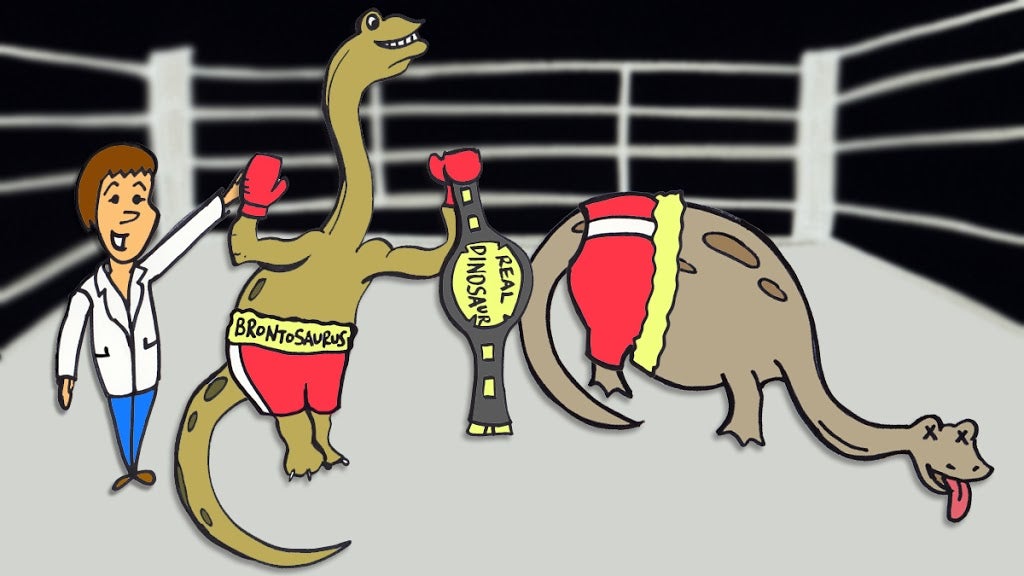Brontosaurus stages giant comeback
Listen
(Illustration by Michael E. Kelly/for WHYY)
The Brontosaurus is back… and it’s the only dinosaur known to go extinct twice, if you will.
The long-necked, long-tailed massive beast was named in 1879 by famed paleontologist Othniel Charles Marsh, who found the specimen.
“Brontosaurus was one of the first dinosaurs to really enter the public imagination, he was popular in museums, and children’s books, said Drexel University Paleontologist Ken Lacovara.
But – this golden era lasted only for a bit over 20 years. In 1903, paleontologist Elmer Riggs proclaimed that Brontosaurus was the same as the Apatosaurus, which had been found first, so it was game over for the Brontosaurus.
“The species was essentially assassinated, thrown on the scientific trash heap, and the Brontosaurus had to change its name to Apatosaurus,” said Lacovara.
Most lay people continued to use the term Brontosaurus to describe the dinosaur- but it just wasn’t scientifically correct until paleontologist Emanuel Tschopp at the New University of Lisbon in Portugal reestablished the Brontosaurus as a unique.
Tschopp’s team analyzed almost 500 different physical features of 81 specimens – some of them relatively newly discovered – and they found that there are significant differences.
“Apatosaurus has a very wide neck, Brontosaurus has a high neck, so they differ in neck shape,” cited Tschopp as one example.
News of Tschopp’s research has thrilled dino fans and researchers, among them Jason Poole who is coordinator for dinosaur hall and the fossil preparation lab at the Academy of Natural Sciences in Philadelphia.
“Surprises like what happened with Brontosaurus are kind of rare – it’s sort of like getting to enjoy part of your childhood again, it’s been really fun,” said Poole.
“Brontosaurus is just iconic – it has such a strong name, it means thunder lizard which is wicked cool.”
Poole says the back and forth Brontosaurus has been subjected to also makes for a great teaching moment. “It enables us to talk a little more about the nature of how science works and how paleontology works.”
Poole is also a dinosaur illustrator, and says his next painting will definitely be a brontosaurus.
WHYY is your source for fact-based, in-depth journalism and information. As a nonprofit organization, we rely on financial support from readers like you. Please give today.




